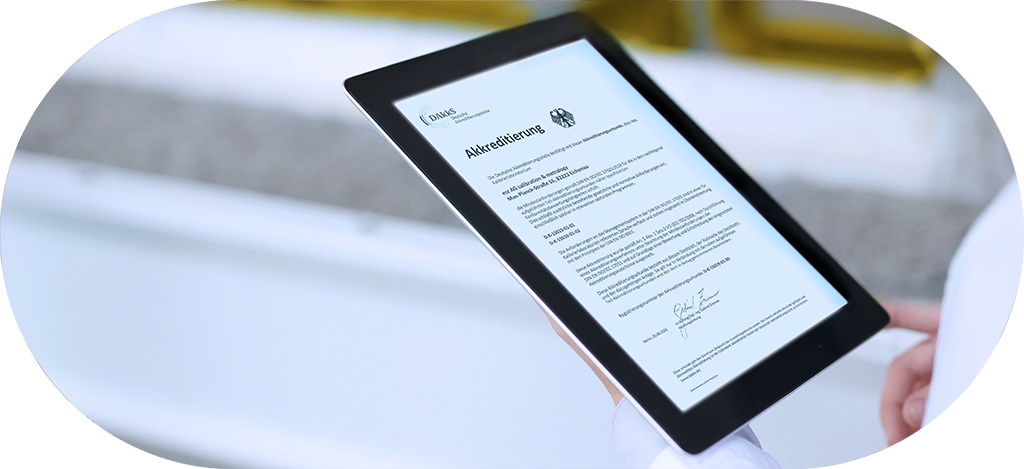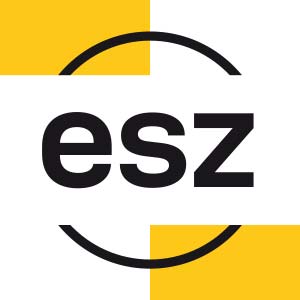Testing and calibration laboratories are faced with the question of compliance with the “state of the art” and accreditation in accordance with ISO/IEC 17025. Accreditation is intended to ensure that the requirements specified for the management of testing and calibration laboratories are applied. The esz AG Quality Management Manual (QMH) defines the structural and procedural organisation with regard to the quality assurance of the technical services of the calibration laboratory. Its application ensures that organisational and technical activities are planned, monitored and controlled and that contractual specifications with the accreditation body for calibration laboratories are complied with. Correct measurement results require constant, optimum ambient conditions such as temperature and humidity. We monitor and store the long-term behaviour of the ambient conditions by means of continuous recording via data loggers. The smaller the deviation from these parameters, the more accurate the measurement results. The values of the ambient conditions at the time of calibration are recorded in the calibration certificate. The exact influencing variables in the individual laboratories are recorded in the document “Ambient conditions” (see below). The smaller the deviation from these parameters, the more accurate the measurement results The quality management system is based on the requirements of DIN EN ISO / IEC 17025 “General requirements for the competence of testing and calibration laboratories”. Dipl.-Ing. Univ. Philip M. Fleischmann The laboratory for direct voltage and low frequency measurements (DC-NF) at the Eichenau site has an average temperature of 23.2 °C. The 2-sigma standard deviation is only 0.6 Kelvin. The laboratory therefore offers ideal calibration conditions, as many measuring device manufacturers specify a reference temperature of 23 °C. In the mechanical laboratory, the 2-sigma deviation is only 0.5 Kelvin at an almost ideal 19.7 °C mean value in the measuring room. Low temperature fluctuations are particularly important for temperature-sensitive length measurement technology. The average values refer to the entire year and are kept constant in both summer and winter. The uncertainty of the relative humidity (RH) on calibration certificates is generally only 3% RH (instead of the previous 10% RH).
Quality management in laboratories is essential in order to meet legal, regulatory and normative requirements in the long term and to ensure, improve and further develop the quality of tests and calibrations.

Transparent quality management
By disclosing all our calibration procedures and measurement uncertainties, we create transparency and traceability of our calibration certificates and results. In this way, we guarantee our customers complete documentation of their own test equipment monitoring and traceability. This transparency is unique on the market compared to competitors.Excellent measurement conditions
Unique transparency in calibration procedures, QM and measurement uncertainties
The employees of the calibration laboratory and all directly or indirectly affected organisational units of esz AG are obliged to carry out their activities in accordance with the quality policy laid down in the QMH. The quality management of the calibration laboratory is integrated into the company’s QM system. The head of the calibration laboratory at all sites coordinates the planning, implementation and monitoring of QM measures in the laboratories in collaboration with the QM officer. Together they are responsible for creating, maintaining and monitoring the quality management manual. The quality management manual is binding for esz AG calibration & metrology and all employees.
Chief Technology OfficerEnvironmental conditions in the esz laboratories
QM manual of esz AG (Ger)
Datei
Contact Contact us directly Calibration certificates Download Device search &
price inquiry To the overview

